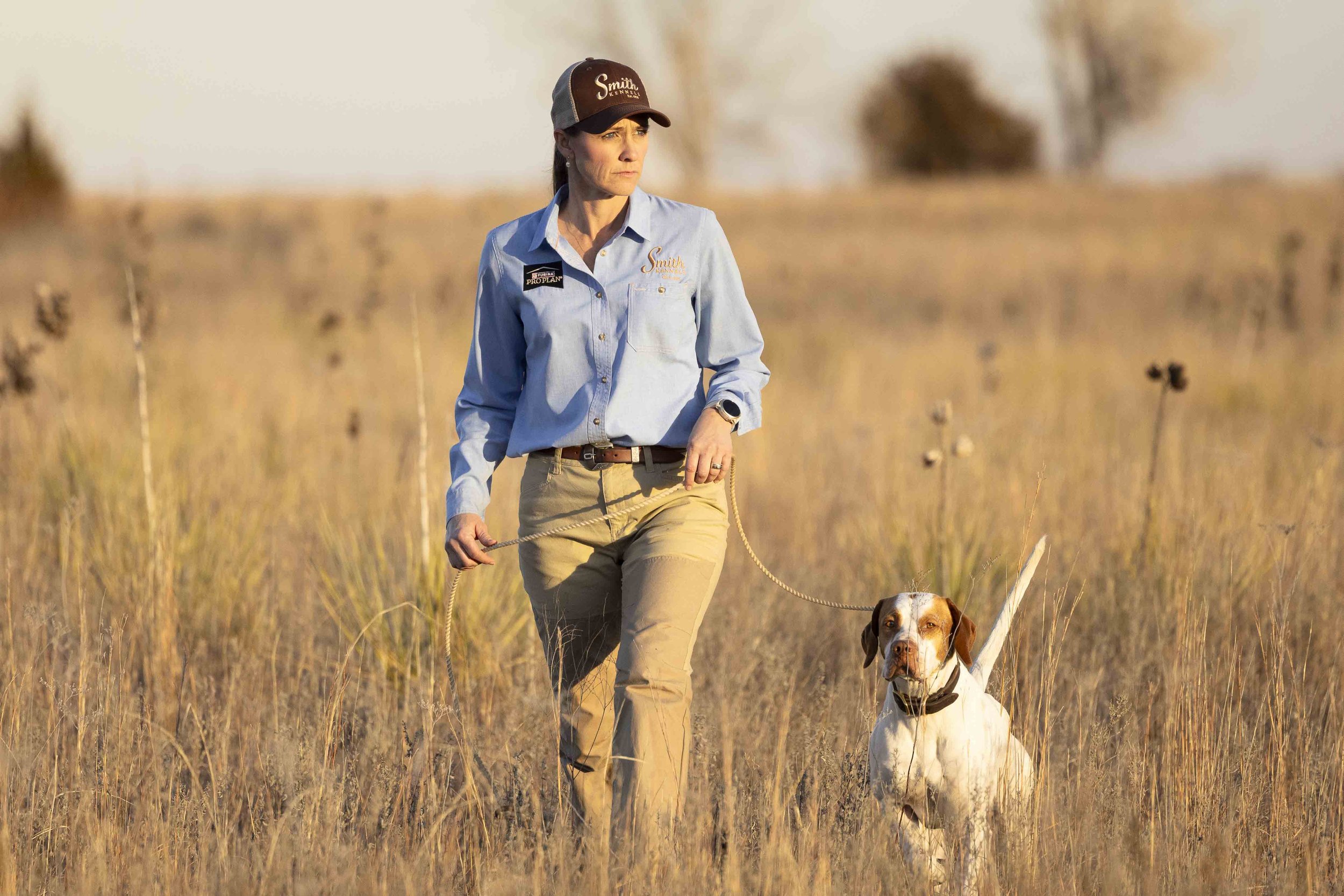The Wonder Lead
What is the Wonder Lead?
(Pssst…we also call it the Command Lead!)
A Command Lead is our simple dog training tool that teaches dogs to heel on a loose lead. It is designed to get dogs to “join up” with you and to make the decision to walk beside you. The lead was developed by Ronnie’s uncle, Delmar Smith, and continues to be a trademark of our system. Well respected dog man, Ed Rader, is credited with being to first to call the Command Lead a "Wonder Lead.” Ed said, "You will wonder how you ever got along without it" and the nickname has stuck with the lead since then. We tend to call it a Command Lead, but no matter the name you use, it has proven its benefits in teaching dogs to heel.
We use the Command Lead in all of our obedience work and bird dog training classes. It is a core tool for our method of training. We have 100% success teaching dogs to heel confidently on a loose lead using this tool. The training goal with a Command Lead is to have a dog willingly walk beside you on a loose lead, responding to very light cues for direction or simply going with you in every movement of your body.
We often see high powered bird dogs pulling their owners around on a leash. This doesn't benefit the dog or the owner for multiple reasons. First, a dog that is in a pulling or "roading" state of mind is not listening to his owner for cues at all. Impulses and reactivity are often the driving mindset in that situation. Second, constant pressure on the dog's throat can cause permanent damage to the dog. Third, a dog that is used to pulling on a leash is much more likely to pull free and run off or get in a dangerous situation.
The Command Lead, when used correctly, works with a dog's state of mind and helps to build a composed, confident, and compliant mindset. The Lead will get a dog to begin to look to his handler for direction and will begin the process of teaching the dog that pressure on his neck carries meaning and there is an easy way to respond that causes the pressure go away completely. Dogs begin to learn to make their own decision to go with their handler and respond or yield to pressure (ie: a cue). As we go through training dogs on the Command Lead, we are able to use lighter and lighter cues, until it just takes a small movement of the lead to gain compliance from a willing canine partner.
“The Command Lead is a training tool that is instrumental in helping us shape calm and joined up mindsets in our dogs.”
The simple spring-like cue and release action of this stiff 6 foot lead quickly has dogs heeling calmly beside their handler as the instant they comply to a cue they gain a release. The colored bumper shifts up and down the rope to create a custom fit for the dog. The bumper should be adjusted so that it is snug enough that the loop of the Command Lead cannot easily slip over a dog's head. This ensures the dog’s safety.
Our Pro Line Command Lead is available at our online store, the kennels, and at seminars. This modern version of our Command Lead comes in multiple colors and has a hand-braided nylon bumper. This is a great upgrade from the traditional black rubber grommet. We have been using the new version at our kennel extensively for multiple years now and it has proven its durability to us. The constant movement up and down the rope does not wear this bumper out.
How to Use a Wonder Lead
1. Open the loop wide so it passes freely around your dog’s head. Position the loop just behind the ears and slide keeper down to approximately 2 inches from loop. Make certain the loop is adjusted so that it is comfortable for your dog, but secure enough he cannot slip out.
2. Lightly hold the rope where there is plenty of slack in the lead. Ideally you want to see a bow in the line indicating there is no tension on the lead.
3. Position your dog in the heeling position beside you. Begin to walk calmly with your dog by your side on a loose lead.
4. If your dog moves out of position, do the opposite of what your dog does.
If your dog forges ahead of you, turn 180 de-grees and walk the other way. Your dog will feel a cue when you change directions and a release, as he catches up beside you.
If your dog turns in to you, turn in to him and cue him to yield to your presence.
If your dog lags behind, maintain your pace with confidence and give him a short series of quick cues to bring him up by your side. As he reaches the heeling position again, give him slack.
5. Your dog learns by being given slack, not by being held on a tight rope. Make certain your dog has a loose lead when he is in the correct position and he will soon learn that is where he should always position himself.
6. The Wonder Lead is a great training tool to gain your dog’s attention and teach him to walk calmly and politely on a loose lead beside you, responding to light cues. Never leave your dog tied or unsupervised with this lead on him.
7. As with any piece of equipment, use common sense in making sure your dog is comfortable and safe while using this training tool.



